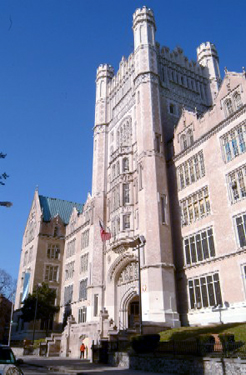Science Hall, Lehman College

Lehman College - 250 Bedford Park Blvd West
Perkins + Will, architects
Built by Dormitory Authority of the State of New York
through the CUNY Capital Program2013
Science Hall, Lehman’s newest building, has achieved Leadership in Energy and Environmental Design (LEED) Platinum Certification--making it the first university-level teaching and research facility in New York City and CUNY, to achieve this top honor. LEED is an internationally recognized green building certification system offered by the U.S. Green Buildings Council. Platinum Certification is the highest recognition offered for outstanding performance in design and environmentally conscious construction.
The impetus for construction of Science Hall was framed in a 2002 Lehman Master Plan asserting that its 1930s-designed campus laboratories and classrooms had inflexible laboratory configurations hindering teaching needs and cross discipline collaboration in the sciences. Major federal research grants flowing into the College presented opportunities for faculty-directed research projects and construction of larger, modernized facilities were needed to train a new generation of students for emerging STEM fields,
After Perkins + Will’s completed Phase I of its three-phase construction design, Science Hall opened for classes in Spring 2013. This four-story 69,000 square foot building is an inviting structure, with a glass atrium, laboratory space, classrooms, seminar rooms, offices, and a roof-top greenhouse. A central courtyard of native grasses cleans storm water for recirculation; solar thermal panels heat water in the building; and a cool roof reflects away heat. Electrical and water system infrastructure can be monitored in real time.
Phase II of construction will add 160,000 square feet to the existing structure for more science department offices. Then Phase III will renovate the adjacent Gillet Hall completing the inter-connected complex. Science Hall promises to be an energy efficient, sustainable building with lower building operating costs over its lifecycle.
Janet Butler Munch

